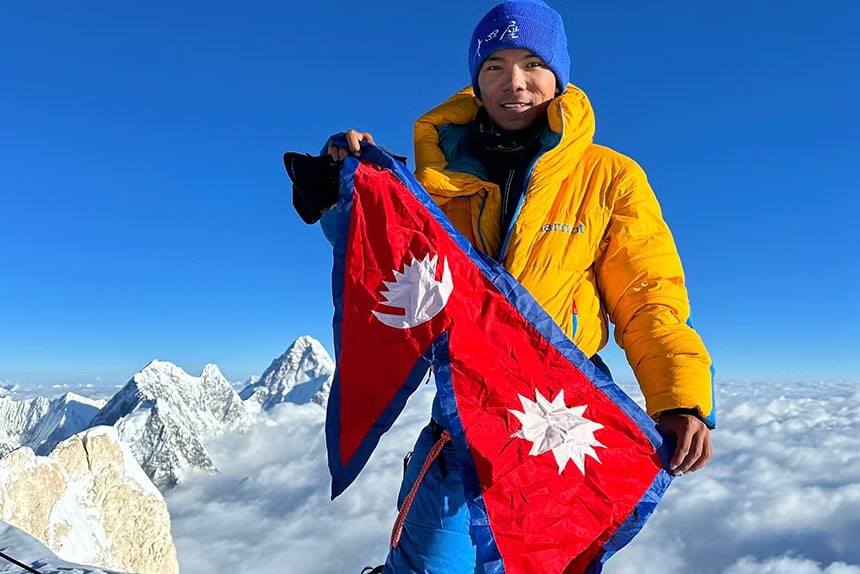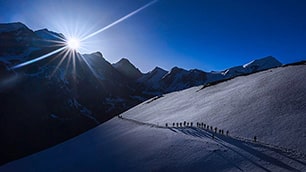Trekking in the Himalayas: Ladakh or Nepal?
If you're planning a trek in the Himalayas, chances are you've narrowed it down to two legendary regions: Ladakh and Nepal. Both offer spectacular scenery, a deep cultural heritage, and unforgettable trekking experiences. But which one should you choose?
While there's no universal answer, this article highlights the key differences to help you decide which region is the best fit for your next Himalayan adventure.
Accessibility
Nepal, with its majestic Himalayan giants and world-famous trails, is undeniably impressive. But reaching those high-altitude treks can be a journey in itself. Many of the most iconic routes, such as Everest Base Camp or the Annapurna Circuit, require a domestic flight from Kathmandu or long drives into the mountains.
In comparison, Ladakh offers a more streamlined experience. Leh, the capital of Ladakh, is well connected by direct flights from Delhi, and once you're there, the trailheads for most treks are just a short drive away. Whether you're heading to the Markha Valley, Sham, or Tso Moriri area, you can always begin your trek the same day you leave Leh.
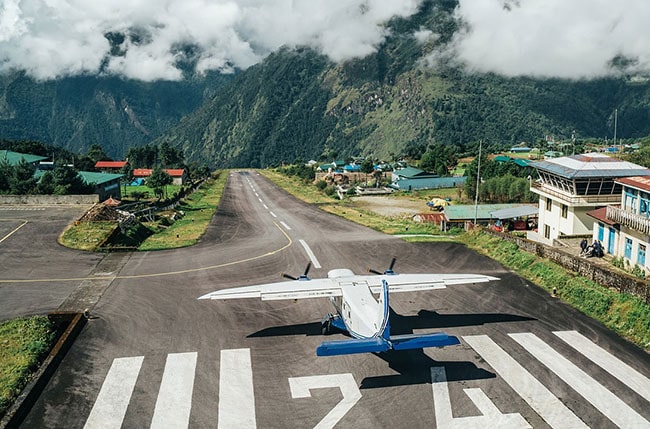
Landscapes
The Himalayan range is vast and varied, and nowhere is that more evident than when comparing the landscapes of Nepal and Ladakh.
Nepal's trails often pass through lush rhododendron forests, rice terraces, and subtropical valleys before ascending to snow-covered peaks. It's a green, dramatic terrain with high levels of precipitation.
Ladakh, by contrast, lies in the rain shadow of the Himalayas. The landscapes here are stark, expansive, and otherworldly: rugged mountains, high-altitude deserts, deep gorges, and windswept plateaus. Snow-capped peaks rise above ancient monasteries and small oasis-like villages surrounded by barley fields. It's a terrain that feels more remote and untouched. It is ideal for those drawn to wide open spaces and minimal crowds.
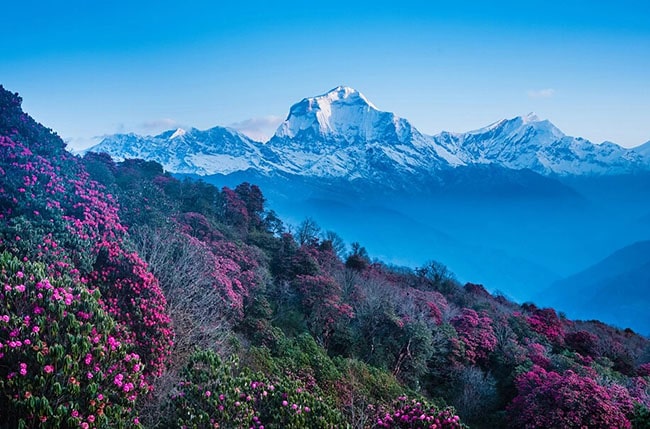
Trekking seasons: when to go
Trekking in Nepal is most popular during the spring (March to May) and autumn (October to November) seasons, when the skies are clear and the weather is relatively stable.
In Ladakh, the trekking season runs from mid-June to September, as the region remains dry during the Indian monsoon. This means Ladakh is perfect for summer treks, when much of Nepal is experiencing heavy rains and slippery trails.
If your travel window is between June and September, Ladakh is an excellent choice.

Culture and villages
One of the great joys of Himalayan trekking is encountering traditional mountain life, and both Ladakh and Nepal offer rich cultural experiences
In Nepal, teahouse treks provide food and lodging in purpose-built accommodations along the trail. While convenient, some of these teahouses can feel commercial or crowded, especially on popular routes.
Ladakh offers a different kind of experience. Homestay treks such as the Markha Valley route allow you to sleep in authentic Ladakhi homes in remote villages. These homes, built in the traditional style and adorned with prayer flags and wood carvings, offer a glimpse into the rhythm of daily life. Hosts take turns welcoming trekkers into their homes, creating a warm and personal atmosphere that many consider a highlight of their journey.
In addition to trekking, Ladakh is ideal for travelers who also want to explore Tibetan Buddhist culture. Ancient monasteries, meditation caves, and centuries-old festivals provide an enriching layer to the experience.
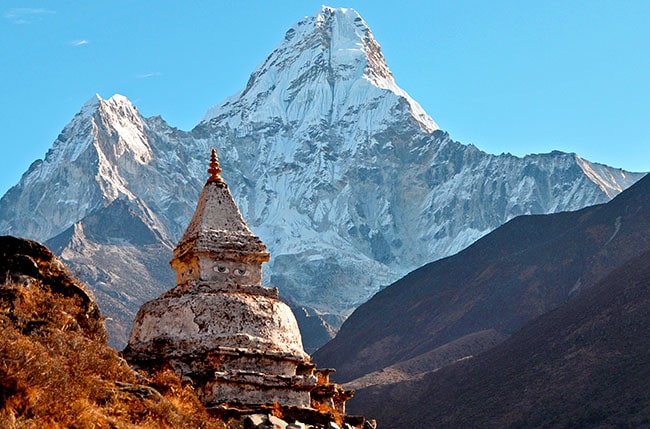
Mountaineering
For seasoned mountaineers or those dreaming of standing beneath an 8000-metre peak, Nepal is hard to beat. It is home to eight of the world's fourteen 8000ers, including the mighty Everest.
However, for trekkers interested in their first mountaineering experience, Ladakh is an ideal place to start. With several accessible peaks above 6000 metres such as Stok Kangri, Mentok Kangri, or Kang Yatse II, Ladakh offers great opportunities to combine trekking with a non-technical summit attempt. The region's highest peak, Nun Kun (7135m), is a more serious expedition and attracts experienced climbers.
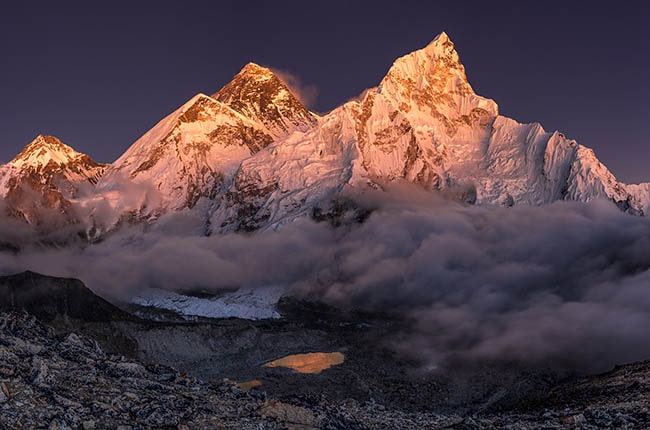
Crowds and authenticity
Nepal's reputation as a trekking paradise is well-earned, but it also means the most popular routes can be crowded during high season. In Ladakh, even the classic treks are quiet and more personal. Many trails remain off-the-beaten-path, and the hospitality in remote villages is still rooted in genuine warmth rather than tourism.
If you're seeking solitude, authenticity, and a closer connection with local culture, Ladakh is hard to match.
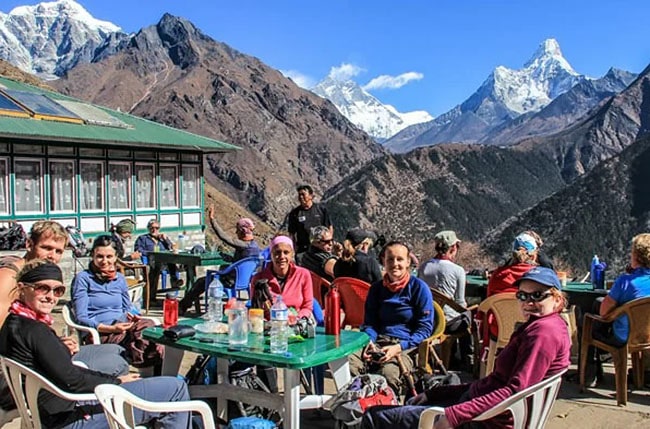
Conclusion: which one is right for you?
Choosing between Nepal and Ladakh depends on your expectations and travel style.
| • | If you're dreaming of towering peaks, forests, and famous names like Everest, Nepal is the place. |
| • | If you prefer high-altitude desert landscapes, fewer crowds, rich Tibetan Buddhist culture, and a unique homestay trekking experience, Ladakh may be the better fit. |
Both regions offer unforgettable journeys through some of the most beautiful mountains on Earth, but in Ladakh, the magic of the Himalayas comes with a little more space, silence, and soul.


 Hemis to Tso Moriri
Hemis to Tso Moriri

